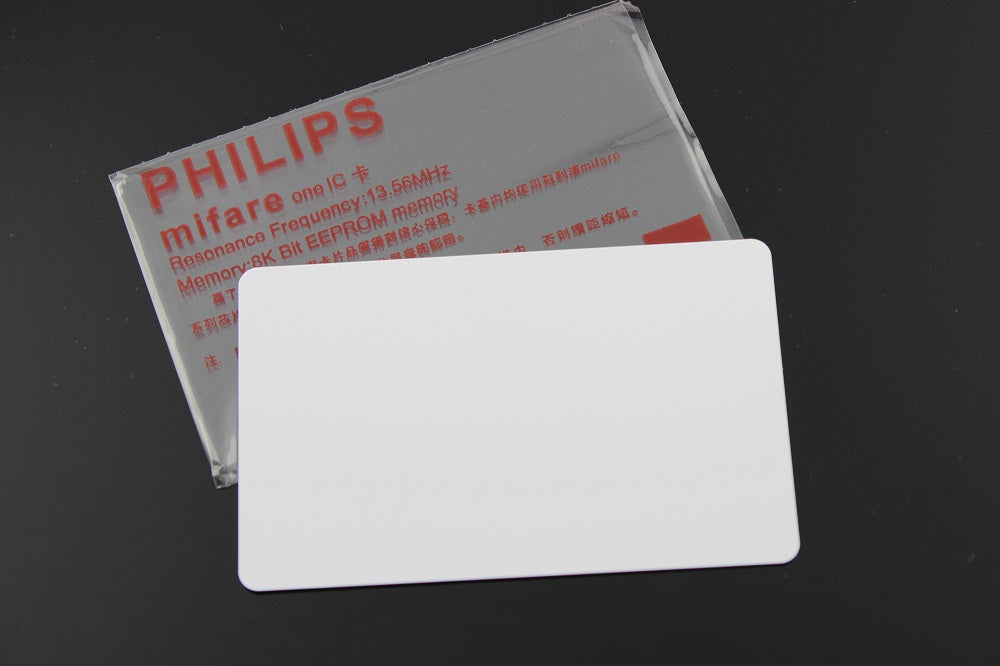NFC Card Tag 13.56MHz 10PCS - This cheap yet efficient RFID card could be the answer to your access controls. You may use this RFID card for any RFID reader that has a frequency of 13.56mHz, namely MFRC522, PN532 and other varieties of RFID reader. This card has 8kb of memory.
Describing NFC card Tag.
Although NFC, or near-field communication, is a wireless technology as well, it only permits proximity connection between compatible devices. NFC requires a minimum of two devices: one for broadcasting and the second for receiving the signal. In what ways does NFC differ from RFID technology and how does it operate? Because NFC operates at a frequency of 13.56 MHz, it can be simple to confuse it with RFID technology. There is a misunderstanding since some high-frequency RFID readers operate at the same frequency level.
The NFC Forum and other existing RFID standards, such as ISO/IEC 14443, FeliCa, and ISO/IEC 18092, are the foundation for the NFC standards and protocols. In other words, NFC technology expands upon high-frequency RFID technology already in use and is frequently utilized in proximity access control solutions. Because NFC technology merely uses an alternating magnetic field, no power is transmitted via radio waves. By doing this, interference between similar equipment or radio communications using the same frequency is avoided.
Typically, the NFC-based system consists of a reader (the initiator) and a target (tag, card, sticker, or key fob). NFC tags are typically read-only and include data. These tags' memory, which ranges from 96 to 8,192 bytes, can safely store private information. Similar to RFID technology, NFC communication is frequently divided into active and passive modes.
5 Key Differences between RFID and NFC
Considering the superficial similarities between the two technologies, there are five significant distinctions between them.
Reading Range
The NFC system functions at a close range, or proximity. On the other hand, RFID is the greatest option for vehicle identification and access because it can read tags from up to 10m away. Visit our Automatic Vehicle Identification Guide to find out more information about long-range solutions.
Communication
Due to its two-way communication capabilities, NFC can provide innovative and sophisticated solutions like peer-to-peer and card emulation.
Speed
NFC tags, unlike RFID tags, can only be read one at a time. Due to the potential use case limitations caused by this, environments with a high concentration of trackable components are frequently better suited for using RFID tags. Asset management in a production facility or tracking fast-moving automobiles is two examples of this.
Data
Multiple sorts of data are stored and transmitted by NFC technology. NFC devices have a bigger storage capacity than RFID devices, which can only carry basic ID information, so they can store and transfer more data. Because of this, NFC is better suited to settings where information about payments, memberships, tickets, etc. needs to be transferred.
Cost Effectiveness
NFC-based scanners often cost less than long-range RFID solutions because of their shorter reading range. For businesses that are on a small budget but still want to use a high-quality solution, NFC is a perfect option.
QUICK SPECS:
- 1 KiloByte (8 KiloBit) non-volatile EEPROM storage
- Built in encryption engine with 48-bit key
- 4 Byte unique identifier burned into the chip
- 13.56 MHz frequency
- 85.5mm x 54mm x 1mm /3.36" x 2.1" x 0.03"
- 6.3 grams / 0.2 oz
- Works about 2" away from reader
NFC Card Tag 13.56MHz 10PCS
NFC Card Tag 13.56MHz 10PCS
72 in stock
Product Code
SKU:2369
Couldn't load pickup availability


